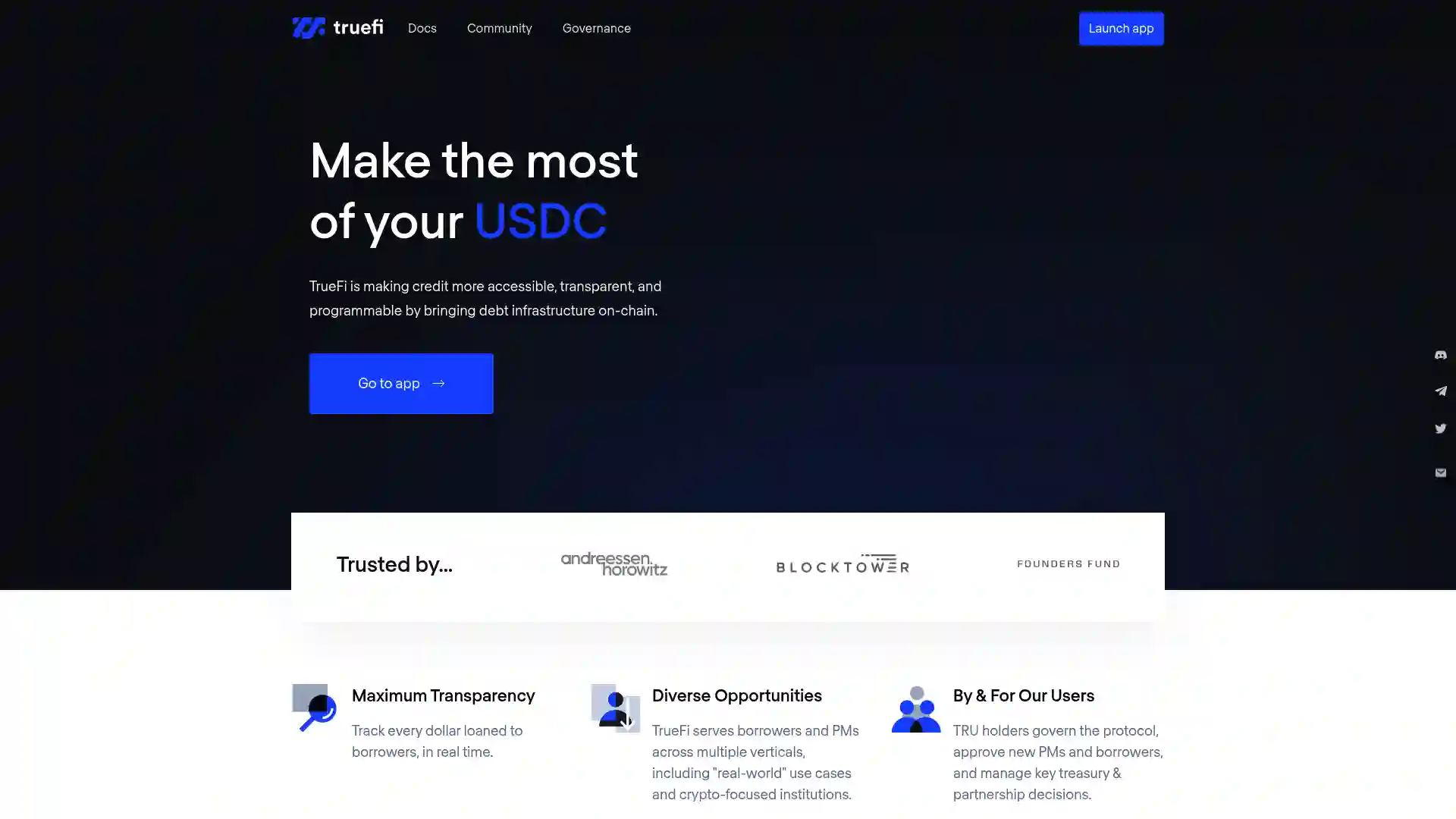TrueFi (TRU)
TrueFi is a protocol designed to create interest-bearing pools that offer high annual percentage rates (APRs) for liquidity providers. It incorporates utility and rewards mechanisms using TrustTokens (TRU) and incentivizes participants to maintain stable, high APRs. TRU is the native token of the TrueFi protocol, serving as the foundation for TrustToken. Holders of TrustToken have the authority to determine credible borrowers within the prediction market, enabling them to rate credit for third parties. This system supports the development of a permissionless credit system driven purely by incentives, allowing TRU owners to contribute to a new credit framework.
The primary objective of TrueFi is to introduce uncollateralized lending to decentralized finance (DeFi), enabling cryptocurrency lenders to benefit from attractive, sustainable returns, while offering cryptocurrency borrowers predictable loan terms without the need for collateral. All lending and borrowing activities on TrueFi are fully transparent, providing lenders with comprehensive insights into participating borrowers and the flow of funds within the platform.

| Ticker | TRU |
| Category | Decentralized Finance (DeFi) |
| Website | http://truefi.io/ |
| @TrueFiDAO | |
| Telegram | jointruefi |
| Contract Addresses | |
|---|---|
| ethereum | 0x4c...84 Copied! Copied! |
TrueFi was established on the principle of progressive decentralization, initially focusing on bootstrapping the protocol and distributing TRU to its community of users and developers. The aim is to evolve into a market-driven, automated credit rating and lending system, requiring users to take on greater responsibility, particularly in onboarding new borrowers and approving diverse loan types beyond a pre-approved whitelist.
How TrueFi functions
Lenders
Lenders contribute TrueUSD to a TrueFi pool, which is utilized for lending purposes, allowing them to earn interest and farm TRU.
Borrowers
Borrowers, such as OTC desks, exchanges, and other protocols, submit proposals to borrow capital from the pool. These proposals include the desired amount of capital, the offered percentage APY, the loan term, and the Ethereum address designated to receive the loan if approved. The pool's smart contract evaluates the loan based on its risk parameters and the Yes/No votes cast by TRU stakers. Borrowers must repay the principal and interest by the term's expiration. Failure to do so may result in legal actions as per the loan agreement.
Team
The TrueFi team includes key members such as Rafael Cosman, Co-Founder and CEO; Alex de Lorraine, COO and Senior Director of Finance; and Tom Shields, Chairman of the Board.
